Beyond Sikorsky Black Hawk | What Is The Future Of Military Helicopters? Battling For Air Dominance
Beyond Sikorsky Black Hawk | What Is The Future Of Military Helicopters? Battling For Air Dominance
Beyond The Sikorsky UH-60 Black Hawk Helicopter. The battle for the future of air dominance.
An insight into new helicopters, such as the Sikorsky Raider, or studies from newcomers, such as AVX Aircraft, or Karem Aircraft, founded by one of the fathers of the Predator Drone, but also Bell And Boeing.
Learn the history of the Black Hawk, including Sikorsky's battle with Boeing, and the creation of the Sea Hawk.
Learn about studies for future wars, including higher speeds, and range, the JMR competition.
The Sikorsky UH-60 Black Hawk is a four-blade, twin-engine, medium-lift utility military helicopter manufactured by Sikorsky Aircraft. Sikorsky submitted the S-70 design for the United States Army's Utility Tactical Transport Aircraft System (UTTAS) competition in 1972. The Army designated the prototype as the YUH-60A and selected the Black Hawk as the winner of the program in 1976, after a fly-off competition with the Boeing Vertol YUH-61.
Named after the Native American war leader Black Hawk, the UH-60A entered service with the U.S. Army in 1979, to replace the Bell UH-1 Iroquois as the Army's tactical transport helicopter. This was followed by the fielding of electronic warfare and special operations variants of the Black Hawk. Improved UH-60L and UH-60M utility variants have also been developed. Modified versions have also been developed for the U.S. Navy, Air Force, and Coast Guard. In addition to U.S. Army use, the UH-60 family has been exported to several nations. Black Hawks have served in combat during conflicts in Grenada, Panama, Iraq, Somalia, the Balkans, Afghanistan, and other areas in the Middle East.
Specifications (UH-60M)
Sikorsky UH-60 Black Hawk orthographical image.svg
Data from Encyclopedia of Modern Warplanes, International Directory, Tomajczyk, U.S. Army,Lockheed-Martin brochure General Electric T700-GE-701D Brochure
General characteristics
Crew: 2 pilots + 2 crew chiefs/gunners
Capacity: 3,190 lb (1,450 kg) of cargo internally, including 11 seated troops or 6 stretchers, or 9,000 lb (4,100 kg) of cargo externally
Length: 64 ft 10 in (19.76 m) including rotors
Fuselage length: 50 ft 1 in (15.27 m)
Width: 7 ft 9 in (2.36 m)
Height: 16 ft 10 in (5.13 m)
Empty weight: 12,511lb (5,675 kg)
Max takeoff weight: 22,000 lb (9,979 kg)
Powerplant: 2 × General Electric T700-GE-701C/D turboshaft engines, 1,994 shp (1,487 kW) each
Main rotor diameter: 53 ft 8 in (16.36 m)
Main rotor area: 2,260 sq ft (210 m2)
Blade section: root: Sikorsky SC2110; tip: Sikorsky SSC-A09
Performance
Maximum speed: 159 kn (183 mph, 294 km/h)
Cruise speed: 152 kn (175 mph, 282 km/h) maximum range at 18,000 lb
Never exceed speed: 193 kn (222 mph, 357 km/h)
Combat range: 320 nmi (370 mi, 590 km)
Ferry range: 1,199 nmi (1,380 mi, 2,221 km) with ESSS stub wings and external tanks
Service ceiling: 19,000 ft (5,800 m)
Rate of climb: 1,646 ft/min (8.36 m/s)
Disk loading: 7.19 lb/sq ft (35.1 kg/m2)
Power/mass: 0.192 shp/lb (0.316 kW/kg)
Armament
Guns:
2 × 7.62 mm (0.30 in) M240 machine guns
2 × 7.62 mm (0.30 in) M134 minigun or
2 × 12.7 mm (0.50 in) GAU-19 gatling guns
Hardpoints: 4, 2 per ESSS stub wings , with provisions to carry combinations of:
Rockets: 70 mm (2.75 in) Hydra 70 unguided rockets in either a 7 tube (M260) or 19 tube (M261) pod.
Missiles: Up to 4x AGM-114 Hellfire laser guided air-to-ground missiles or 2x AIM-92 Stinger heat seeking air-to-air missiles per hardpoint. The Hellfire launcher rails can also be equipped with M260 (7 tube) Hydra pods.
Other: 7.62 mm (0.30 in), 12.7 mm (0.50 in), 20 mm (0.787 in), or 30 mm (1.18 in) M230 gun pods
Bombs: Can be equipped with VOLCANO minefield dispersal system. See UH-60 Armament Subsystems for more information.
-
 0:45
0:45
Aviation Obsession
1 year agoUH-60 Black Hawk Utility Helicopter
47 -
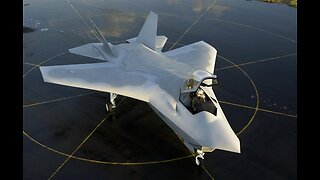 8:02
8:02
Petawawa19
1 year agoRussia's MIG-41: Future 6th generation, multi-role, long range fighter- interceptor
205 -
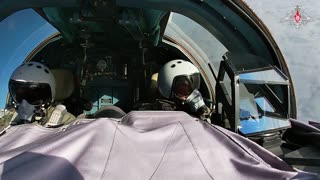 1:45
1:45
The World of Weapons and Military Technology
6 months agoRussian Air Force in action. Helicopters and Su-34 fighter-bomber
231 -
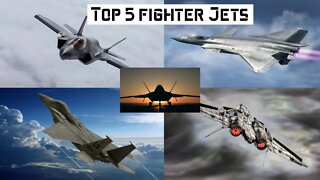 17:52
17:52
ShieldWall Defense
1 year agoTop 5 fighter jets #usmilitary #russianmilitary #chinamilitary #plaaf #usairforce
292 -
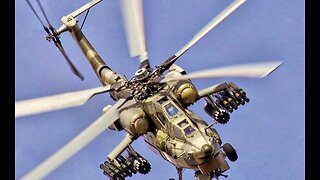 8:16
8:16
Military Technologies, Innovations & Future Weapons
1 year agoRussia's Newest Mi-28NM Helicopter Will Be A Fighter Capable Of Downing Fifth Generation Aircraft
2351 -
 9:02
9:02
Military Technologies, Innovations & Future Weapons
1 year agoKA 52 - How Military Coaxial Helicopter Works - MilTec by AiTelly
141 -
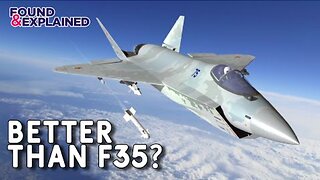 16:06
16:06
Military Technologies, Innovations & Future Weapons
1 year agoSu-75 Checkmate - Russia's INSANE New Fighter Jet! - Better than the F-35? MilTec
8631 -
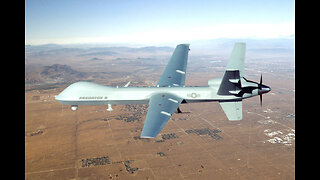 6:35
6:35
Petawawa19
1 year agoAmerica's MQ - 9 Reaper: Hunter-Killer Aircraft
363 -
 49:23
49:23
Flight Ops
1 year agoWorld's Most Extreme Military Aircrafts
41 -
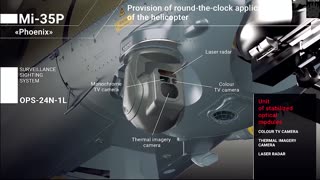 3:20
3:20
The World of Weapons and Military Technology
6 months agoMi-35P “Phoenix” (NATO reporting name: Hind-E) attack helicopter
46